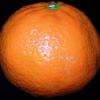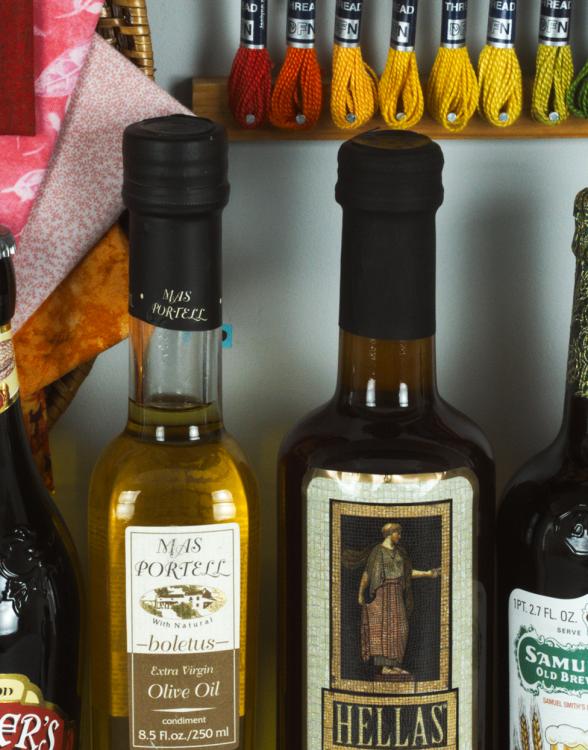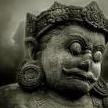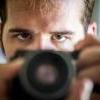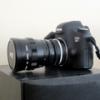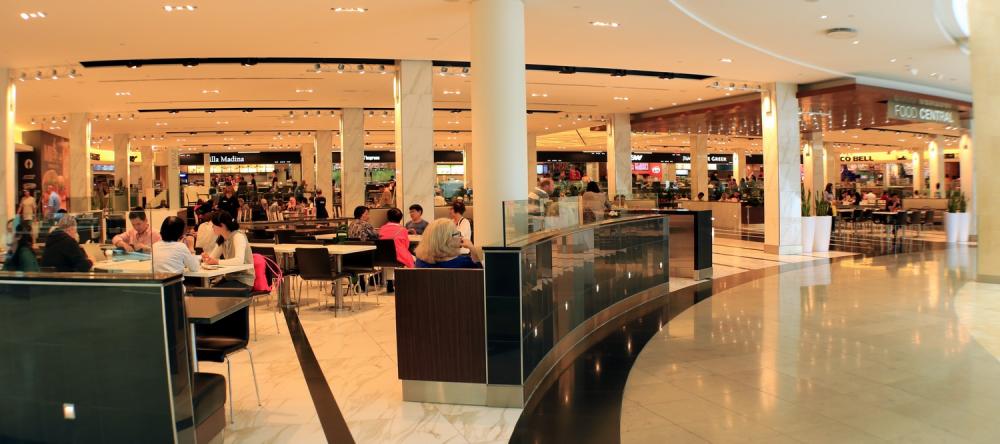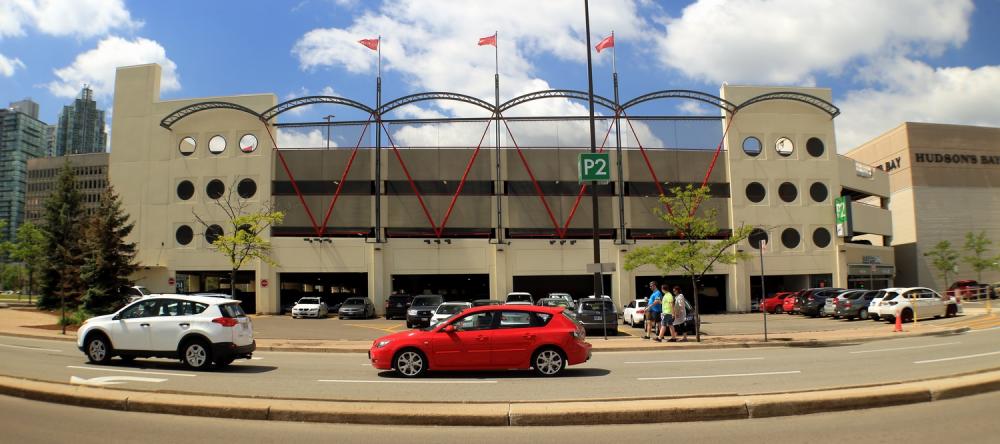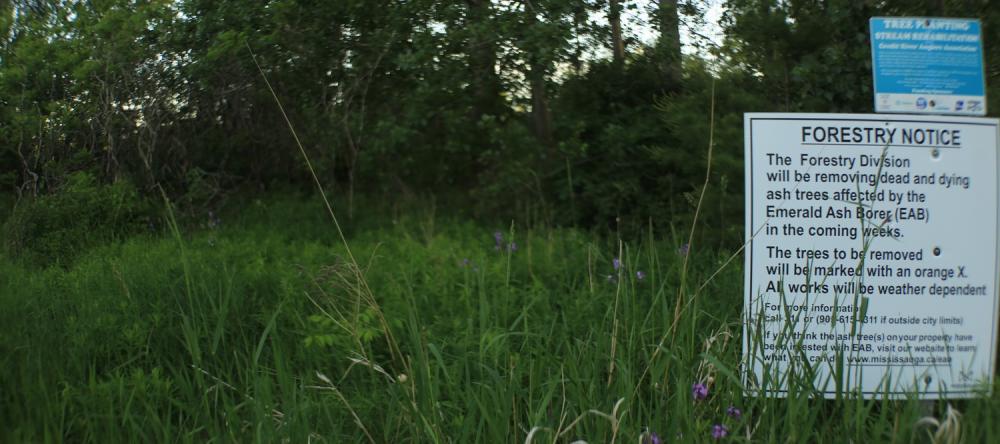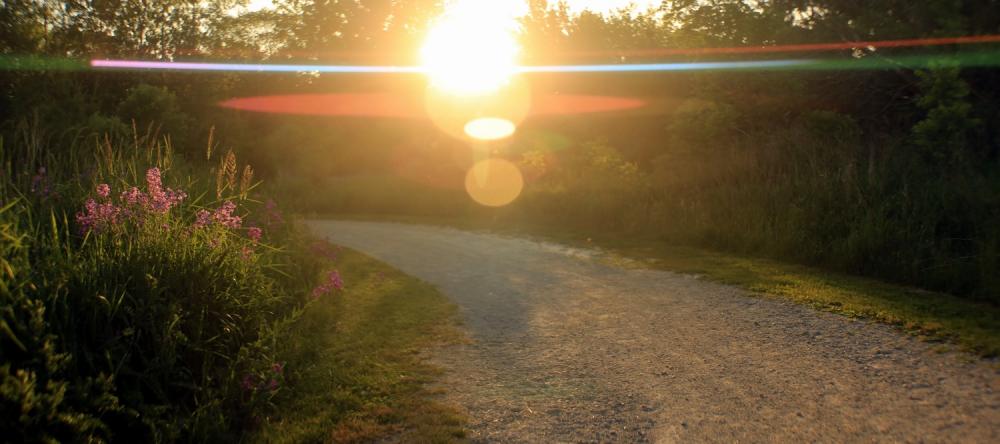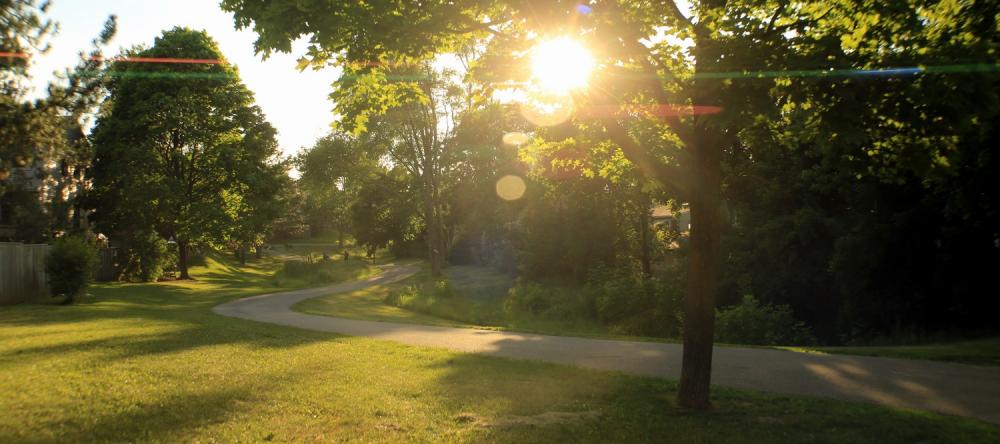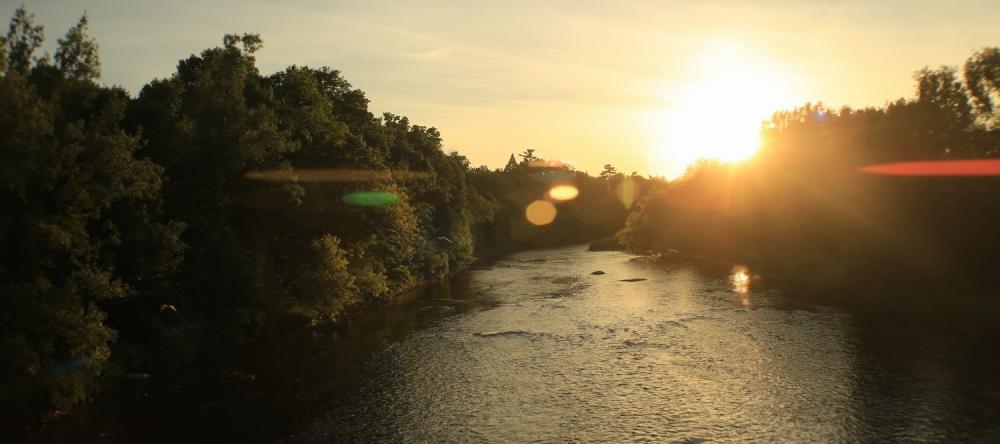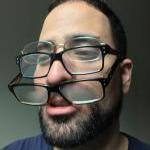Leaderboard
Popular Content
Showing content with the highest reputation on 02/18/2017 in all areas
-
Sure looks like some kind of NR added. idynamic and iresolution maxed? The high iso with neat video looks like neat video has not been applied correctly - it's pulsing in and out. Makes it worse than not having it.3 points
-

Panasonic GH5 - all is revealed!
deezid and 2 others reacted to Andrew Reid for a topic
Something is up with that one... No way the GH4 is that clean at ISO 6400. Fake test?3 points -

Samsung NX Speed Booster
Juxx989 and 2 others reacted to lucabutera for a topic
When I started to think about building a smart autofocus adapter, I asked you if you preferred the Techart Pro adapter or Aputure Dec AF. Almost all of you have responded Techart Pro, and in fact, to have an autofocus system that works with all lenses that's cool! So I started to think what could be a fast way to have it in the real world and not in the world of dreams .. The 30mm f2 pancake is long 21.5mm (half a millimeter longer of adapter Nikon/NX), it has no buttons OIS, Zoom or another, it's just a fixed lens which has two functions: 1) Autofocus 2) Iris. These characteristics make it the perfect candidate to become an AF adapter. First I ceck the range of focus, it is 6mm (Techart Pro it's only 4,5mm). After I disassembled the rear flange, I raised the board and looked inside, the electric motor is positioned laterally and all the gears rotate the rear part of the ferrule, the main gear is located in the rear part of the lens, and this is good, why not cluttered and provides more space for mounting the front lens. Inside there is the motor for the opening of the iris and is parallel to the support cylinder for glasses. In general, having taken the measurements, I can state that it is possible to convert the lens in a 30mm AF adapter. if there is enough space, you can install the pin Canon EF mount on the front of the commands to activate Stabilizer and Aperture Iris with micro Arduino. Up to here I made simple but to obtain an AF adapter is necessary to construct a new outer ring of aluminum with two or three linear bearings to support the weight of the new lenses, build a new internal support in aluminum with front flange of the lens assembly and perhaps replace some plastic with new gears in aluminum gear. The width of engagement Nikon is ok, but the width of the Canon is greater, then I have to redesign the whole body. Such a change could cost about 400 euro, this could be a bargain for those with a 30mm, but considering the prices soared Samsung lenses may exceed 650 euro for a complete adapter. Having a third-party adapter with AF lenses is possible. This is only one of the possibilities, I have other ideas and solutions to build AF adapter. I wrote this post to know from you what you think.3 points -
2 points
-

GH5 Noise Reduction @high ISOs simply sucks...
markr041 and one other reacted to webrunner5 for a topic
I have no clue in hell why people don't take advantage of newer cameras that can take still shots, video at high ISO's. People have been pissing and moaning about low light ability, and along comes a camera like the Sony A7s and they say well I am going to stay at a ISO a 10 year old camera they had did. What the hell! It means you can have cheap LCD lights, hell use the light from your cell phone for that matter instead of 5,000 watt lights movie productions use. Use available light coming trough a window, a candle, the Moon, you get the point. A Sony A7s is a miracle and people don't take advantage of it, hmmm.2 points -

Panasonic GH5 - all is revealed!
deezid and one other reacted to webrunner5 for a topic
Wow do they not see that pulsing? Jesus I had to stop watching it.2 points -

Panasonic GH5 - all is revealed!
deezid and one other reacted to webrunner5 for a topic
Well it looks like I have been very wrong about AF if these videos are to be believed. I am amazed they have been able to boost it that much. Some real voodoo science going on here! I may Have to get one.2 points -

GH5 Noise Reduction @high ISOs simply sucks...
Justin Bacle and one other reacted to TheRenaissanceMan for a topic
Ironically, it takes powerful lights to create the contrast ratio necessary for a traditional "dark horror" look. Horror sets aren't dark at all to the naked eye.2 points -
Hi, couple days ago just for fun i shot this awesome yamaha grizzly ATV, ursa mini 4.6K in raw 3:1, 4.6k 50/60fps and 2k 120fps. I used canon 16-35 f2.8 L II and canon 70-200 f2.8 II IS lenses. I recorded everything to ssd drive via cfast to sata breakout cable. 70-200 shots are handheld, for 16-35 i used glidecam devin graham signature series. Graded in resolve 12.5, edited in premiere CC.1 point
-
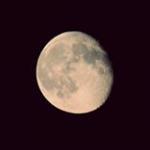
Samsung NX Speed Booster
Beritar reacted to Marco Tecno for a topic
Well, I'm surprised for your words, to say the least. I'm using nx since 2011. I have several nx bodies, almost all nx lenses. I really like nx, more than canon, Nikon, sony and even pentax. Having different ideas is not bad, unless you are a dictator. And this is a free place. If my posts annoy you, you can ignore them. I think the idea you have for this adapter doesn't fit MY NEEDS. It could work for others. I can well underline the weaknesses of a project, as well as the good parts. I guess that ttbak has similar needs as mine, we'll see what he thinks about your idea. Could you tell me one positive side of your approach, compared to a d5500+one of those lenses? I see only negative sides, apart for the technical "game".1 point -
Hey @jonpais, thanks for posting this. I was inspired went out today and played with my Olympus 75/1.8. I seldom use the lens (and was thinking of selling it) as I find it difficult to use for moving subjects (like my kids). I also have the 35-100/2.8 which sort of covers the same range with similar compression, but is easier to use due to the zoom. Were you shooting at f/1.8 in this video, and if so are you adjusting the shutter seed to be able to shoot wide open? Today was a sunny February day in the UK (not strong sun) and I was recording some scenes with my 6-stop ND and really could only get to f/2.8-4 exposure when using 1/50 shutter speed. I was also comparing it to my PL15/1.7 which has a much better manual focus feel (and autofocus). The 75mm has a very touchy focus dial. The image is lovely though when I could catch my kids in one place to nail focus.1 point
-

Samsung NX Speed Booster
Juxx989 reacted to lucabutera for a topic
I'm tired of hearing about how Metabones Holy Grail adapter. I've had it with Sony A7s, I sold both for continuous camera crash, slow autofocus and always not accurate autofocus. These are the technical problems of Metabones listed on the official website: "Limitations: Autofocus Continuous AF and video AF are not supported. (Performance may be unsatisfactory.) AF may not work if the maximum aperture of the lens plus any EF Extender or other teleconverter attached is smaller than f/8. The first two autofocus attempts are used to calibrate the lens and as a result may not lock successfully on the target. Half-press the shutter release button again and autofocus will lock successfully. Autofocus may have difficultly locking onto subjects which are very close to the nearest focusing distance of the lens. Autofocus accuracy depends heavily on the design and working condition of the lens. Lenses with hidden problems which may not be apparent on Canon DSLRs will lead to inaccurate and unreliable autofocus on Sony NEX. Typical problems of this kind that we have seen include an unsmooth/erratic autofocus mechanism (e.g. getting stuck intermittently at a certain focusing distance), a faulty/worn-out distance encoder or other faulty/worn-out internal sensors. Other No support for lens corrections such as peripheral shading, CA and distortion. The EF-mount lens may make audible noises during iris changes and autofocus, wich may be picked up by the built-in microphone of the camera during video recording. Use of an external microphone is advised. Early Tamron VC lenses such as the AF 28-300/3.5-6.3 XR Di VC LD Aspherical [IF] Macro (model A20), AF 18-270/3.5-6.3 Di II VC LD Aspherical [IF] MACRO (model B003), SP AF 17-50mm F/2.8 XR Di II VC LD Aspherical [IF] (model B005) may not be able to freely switch between OIS and IBIS because they may not report IS activity status. Later Tamron VC lenses equipped with USD or PZD focus motors are fine. Some aftermarket battery grips may cause the aperture to change erraneously. This is a bug of the aftermarket battery grip but NOT arising from the Metabones Smart Adapter. Turn off the aftermarket battery grip or use a genuine Sony battery grip." The adapter I have in mind, it works perfectly with all lenses, regardless of the protocol used. It turns every lens in a lens autofocus, including Samyang lenses, Cine, M42, Nikon and over all in autofocus lenses. It works perfectly even in video mode, where Metabones can not do! Besides the AF it IS Canon Stabilizer (OIS it's Samsung) and Aperture Control. Finally the lens donor is not cannibalized but remains convertible to return to Samsung original state. I paid 100 euro a 30mm f.2 now costs more than 300 EUR! If you think that spending 400/500 euro for an adapter kit like this is too much, I think you did not know the counts. Make an order of 1,000 pieces and I can build it for half the price. You can also buy Nikon camera EUR 500, but if it mounts a lens of 100 EUR you have not solved anything!1 point -
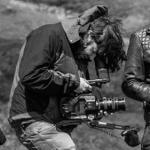
Panasonic GH5 - all is revealed!
jonpais reacted to Oliver Daniel for a topic
I think it's Bloom who said it in his blog. I'm really enjoying the A6500 at the moment, and even chose it ahead of my FS5 for a shoot this week. The 4K image is pretty special sauce. Better than the FS5's internal 4K. The IBIS is super useful. The autofocus is great, awesome for a gimbal. Just wish it had 4k60p. This peaks my interest in the GH5 - as I expect the experience to be similar, and better in some aspects. Its one of them though. I'm totally covered with my Sony's. No colour issues. Got past that. I'll keep watch of the GH5 but new cameras and gizmos are way, way down my priority list. Making stuff is No.11 point -
Nice, this is as close as I envision it, picture is removed, only action is left and important. Beside obvious skills, an old DSLR, lenses, stabilization1 point
-

GH5 Noise Reduction @high ISOs simply sucks...
noone reacted to webrunner5 for a topic
Well I, and probably everyone on here is not going to knock the output of a BMPCC, the buy of a lifetime in my book. But it has its limits. The Sony A7s is a FF camera that goes over 100,000 ISO I just don't think you can compare the two . Hell not counting the A7s can do 4k with a external recorder. Yeah 8 bit, but we have been shooting 8b stuff for 20 years or more and it somehow has worked.1 point -
Some footage from James Miller. Highlight rolloff looks very good when recorded externaly with his baked in LUT.1 point
-
Special Family Project - Advice on Lenses
webrunner5 reacted to mercer for a topic
To be clear, I am not trying dissuade you from getting a GH5 and native lenses. One can do a lot with that camera, but the easiest look will be a little clinical. If you are a good colorist, you can make any camera look "filmic" or "cinematic." If you're looking for an easier path to that, then get a BlackMagic Camera and shoot in Raw or ProRes. If you're looking for great AF and nice skin tones go with a Canon. If you want 4K, go with a Mk iv. If you want a more cinematic look go with a C100 mkii. Take a look at Kendy Ty's videos on Vimeo and see what he did with an old Canon DSLR... The important thing is to do your research, know your abilities and know how much time you're willing to put into the final product. That is all... good luck!!!1 point -
Tremendous respond from all participants in this thread. A lot to think about it. I need to digest all these and come up with solution. Though, I want to mention to clarify my needs for the project I am after not only nice footage but in a way "unusual" pictures, meaning, nice, clear, sharp photos will not do this time. Why bother with all these if iPhone can do the same thing In broad daylight, right? Please try to understand what I mean, I am not trying to be difficult or smart ass in any way. Rest assured I never assume that gear is all you need to get amazing results, either. Maybe GH5 is not the right tool for this project, danno, I have to start somewhere ...1 point
-

Samsung NX Speed Booster
Juxx989 reacted to lucabutera for a topic
If you want AF S lenses, you must use S lenses, please do not insist on this point. The adapter has an independent motor so if you want to see its performance, inform you about the features of the Samsung 30mm f2 lens. The Canon Stabilizer works with power of Pin, I can connect a micro Arduino to control the iris. I think there is deep enough to mount Canon EF lenses, the gearbox is 9mm thick, this is close to the Canon pin and could be an obstacle but I am optimistic. It is not very difficult to disassemble and replace the lens with an instruction manual, but it is possible to commission the work to any repairer of electronic equipment.1 point -

Samsung NX Speed Booster
SMGJohn reacted to lucabutera for a topic
Yes, you can clone the motherboard, but this requires the construction of many units and would also make it also necessary to build the electric motor and the gear housing. The original motherboard is a single hardware component, consisting of table, engine, gearbox and sensors that operate the MF when turning the focus ring. This adapter would be very fast to found the focus, as the original Samsung lens because the camera would work with a 100% Samsung hardware. The good news is that the conversion would be reversible, the original parts would remain operational if reassembled like the original lens. This becomes a better investment, because it does not sacrifice the original samsung lens.1 point -
What are the best European shops for Audio/Video equipment?
webrunner5 reacted to ricardo_sousa11 for a topic
Cvp as people have said. I usually buy all my stuff on ebay though, Ifinity or Koha store (or whatever its written), they have really really good prices.1 point -
Light m43 wide angle for Glidecam
jonpais reacted to Fredrik Lyhne for a topic
And that Fuji video looks great! but since the OP wanted a wide angle 50mm is a bit narrow. For stills? The PL is better. For video I always use manual focus.1 point -
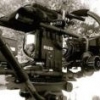
GH5 Noise Reduction @high ISOs simply sucks...
Amro Othman reacted to j.f.r. for a topic
Your post lacks any and ALL form of common sense, especially when the base iso for this camera (Sony A7s) in S-log is 3200 iso.......... Now commenting on the GH5 or therefore any GH camera, it's not designed for high iso work. You need at a minimum an S35 sensor camera if you want to push higher iso's....... From my experience GH cameras should be shot no higher than 800iso and in EXTREME cases 1600iso and will definitely need noise reduction.1 point -
Samsung NX Speed Booster
Marco Tecno reacted to Arikhan for a topic
@lucabutera As this adapter is NOT a mass product, it's completely clear, that it will be much more expensive than (feature wise) comparable mass products. Personally I still believe, 650 EURO should be the maximum of pricing, beyond that it will be quite hard to get it sold - even for NX enthusiasts. But this is only a personal point of view and feeling. You should consider, that this talk is only theory till this moment, because the price also depends on: how fast and accurate does AF work in stills with your adapter (comparable with Samsung native lenses) how fast and accurate does AF work in video with your adapter (comparable with Samsung native lenses) A good level of comparison is - in my eyes - the Metabones EF to E-Mount adapter (Metabones) or the MC-11, that works really well in Video-AF with Sigma lenses. You should also consider, the Samsung 16-50mm f2-2.8 OIS (can be bought at about 1.000 Euros these days) and the Samsung 50-150mm f2.8 ED OIS (can be bought at about 1.300 EURO these days) are very good video lenses with fast and accurate AF and OIS and cover the demands of almost all NX owners, who need AF. Most serious / ambitionned / enthusiastic NX filmers own the Samsung 16-50mm f2-2.8 OIS, so an adapter costing over 650,- Euro will probably be too overpriced for a majority of NX-users, so most of them will prefer to manually focus with an affordable EF to NX adapter....Always consider, the NX1 / NX500 are "dead cams" at the moment, so most possible customers will balance reasons to buy or not to buy such an expensive adapter for the dead NX system... I know, this is the crucial dilemma of every possible manunfacturer of such an adapter: Will they get enough customers to buy such a device in regard to the fact, that this adapter will probably never be a mass product for price X? As I told you, I will buy the adapter even for 600 EURO, probably also for about 650 Euro. If I would pay more than that, depends on the points I mentionned above...(AF speed and accuracy compared to another camera/adapter systems like Sony EF to E Metabones Mark IV adapter...)...probably not. 650 Euro would be a production price (R&D, testing, buying and assembling parts) hard to achieve from a manufacturer's POV, but it's a bunch of money for every potential customer - considering that Samsung retired from digital camera business... Another fact to be considered is, the GH5 is released - a modern device with a bunch of lens options and manufacturer support for the next years. So...I believe (my personal believe) many former NX users will probably sell their gear and move to Panasonic or wait for an A7R III / A9 / A7S III...Technology moves on and there is a "point of no return" for almost every NX enthusiast...Just my 2 cents... For sure, there will still be many NX enthusiasts out there, but the question (from YOUR POV) is: How many, and how much money will they spend on such an adapter?1 point -
Special Family Project - Advice on Lenses
Kubrickian reacted to mercer for a topic
So just to clarify the OP's request... will you be filming your daughter's dancing primarily at recitals? I think without a doubt you would want a zoom lens. Sure in most instances primes are better but for your purposes, I would only recommend a zoom. Since you would like some nice bokeh, you need either a fast zoom or an f/2.8 speedboosted. For the filmic look you are after, I would certainly recommend one of three lenses... 1. Sigma 18-35mm with two adapters... the Metabones speedbooster and a Metabones electronic... this way you will double your zoom range with the one lens and depending upon where you are set up, you can choose the proper adapter accordingly. 2. Nikon Nikkor 28-70 f/2.8... the Bourne Lens... speedbooster and dummy adapter. 3. Tokina 28-70 f/2.6-2.8... Angenieux design... speedbooster and dummy adapter. There are various other zooms that will work for your specified needs... the Sigma 17-50mm f/2.8 with a speedbooster would be lovely. Vintage Nikkor zooms. Canon L FD or EF zooms speedboosted. But honestly... if you are after a filmic look, I wouldn't get the GH5 and the native primes or zooms. The GH5 is going to be an amazing camera and there will be amazing work produced with it and some of that work will look filmic, but it will take work to get there. I personally believe you can acquire what you are looking for with a better suited camera to your needs. For instance, if you are really interested in the filmmaking aspect of the project, then I would recommend either a BMPCC or a BMMCC. If you are interested in a good looking video with good colors and ease of use with great AF, I would recommend either the Canon 5d Mk IV or a C100ii. The Sigma 18-35mm will work brilliantly with Canon's DPAF (dual pixel auto focus) and your footage will thank you in the long run. This was shot by fellow forum member @Kubrickian with a Canon C100 mkii. Now he is a pro, but if I were in your shoes, with your budget, this is the route I would take.1 point -
After playing around with the RAW files out of the GH5 (http://www.imaging-resource.com/PROD...onic-gh5A7.HTM) I definitely want a switch for turning off any processing like noise reduction (at least luma) and sharpening! The results speak for themself. Video would look amazing until ISO 1600 with incredible detail and very fine grain. Even better than any Blackmagic URSA 4K footage (thanks to way better dynamic range and high ISO capabilities) The samples were processed using RAW Therapee (AMAZE Debayering, Chroma noise reduction starting from ISO 1600 and bicubic scaling to 4096px (DCI) width) to emulate the internal downsampling. Link to full samples in full quality (download and watch at 100% using a proper viewer like faststone): DROPBOX ISO400 (low quality on the forum)1 point
-

Special Family Project - Advice on Lenses
jonpais reacted to webrunner5 for a topic
I know it is slow, but damn talk about a one lens sort of does it all! Olympus 12-100mm f/4 IS1 point -

Samsung NX Speed Booster
Marco Tecno reacted to SMGJohn for a topic
Is there no one who can help you do custom PCB design?? There are plenty of websites were you can order cheap custom PCB you designed yourself. I can only do very basic PCB designs, but there must be someone here who can do more complicated stuff, or even fund someone to do it for you that would be a possibility.1 point -
Thank you Flynn, thank you Jonpais, all excellent suggestions. For time being I decided to start with PL 42.5 prime, even though it is expensive by any standards ... but native, stabilized, fast with good bokeh. Another lens I am very tempting is Voight 17.5 or I'll try to get 50mm f/1.5 Nikkor AI to see what I can accomplish with. Based on my previous use of OM-D and bunch of Oly native lenses this time around I want to steer away from "generic" look ... Found this enlightening video if anyone is interesting1 point
-

German forums for used gear
zerocool22 reacted to jase for a topic
Dslr-forum.de is the place to get stuff for a good price. Most importantly, the stuff is sold by photo-enthusiasts, so you can expect good stuff. you can also check kleinanzeigen.ebay.de which is in essence the german equivalent to craigslist. Sometimes even cheaper, though less trustworthy and less camera stuff.1 point -
I am merely stating fact. There is no absolute correlation between dynamic range and bit depth -- they are two completely independent properties. Yes. That is how binary math works. However, that has no bearing on how many bit depth increments are (or should be) mapped to a signal/dynamic range. The number of "steps" mapped within a signal/dynamic range has nothing to do with the scope of that signal/dynamic range -- that is the point. This is a simple concept/fact. There might be an older machine vision camera with those specs, but it is an irrelevant request -- there are plenty of cameras featuring multiple bit depths yet with only one dynamic range. The dynamic range of these cameras doesn't change because the cameras' bit depth changes. Again, bit depth and dynamic range are two completely independent properties. Also, subject/location contrast has nothing to do with a camera's dynamic range. Standards and their calculation have nothing to do with the basic fact that bit depth and signal/dynamic range are totally different properties. Furthermore, dynamic range is so independent of bit depth that many systems (including numerous cameras) have incredible dynamic range with absolutely zero bit depth.1 point
-

GH5 Noise Reduction @high ISOs simply sucks...
Justin Bacle reacted to TheRenaissanceMan for a topic
Also, keep in mind these are OoC JPEGs, not video frame grabs. Different sampling, processing, and compression applies.1 point -
Actually, the EMD-1 Mark ii seems to have quite impressive noise reduction (on par if not better than the A6500). If Panasonic can replicate that, it would be amazing, especially for video.1 point
-
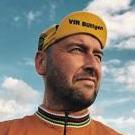
German forums for used gear
zerocool22 reacted to Rudolf for a topic
I bought cameras and lenses here and it was always ok http://www.dslr-forum.de/forumdisplay.php?s=c2db1c13bb03ef035817844351507695&f=61 point -
oh my gosh!, C100 ghosting?
webrunner5 reacted to hijodeibn for a topic
There is no ghosting, I feel happy now, raised the ISO and the blur was almost the same, the last picture that worried me was just an optic effect due to the color of the flowerpot base……clearly I overreacted, well I guess we all have a bad day sometimes….. Dammed XC10 !!!!!!, I am seeing ghosting now everywhere !!!! Thanks man, I totally forgot to raise the ISO to confirm, good catch!!!!1 point -
oh my gosh!, C100 ghosting?
Justin Bacle reacted to scotchtape for a topic
You guys are so restrained and polite I am impressed.1 point -
German forums for used gear
zerocool22 reacted to Phil A for a topic
You can try slashcam.de for videography related stuff or for mirrorless systems and lenses also dslr-forum.de1 point -
Light m43 wide angle for Glidecam
JazzBox reacted to Fredrik Lyhne for a topic
I haven't used the 14mm so can't really comment on that. The 15mm is by far my favorite lens of the small native lenses in the system, especially for people and street photography. 12mm is too wide and 20/25mm is to narrow in my opinion.1 point -
The 14mm f2.5 weighs like 50g. It's basically the size of a Canon or Nikon rear lens cap. So if you're trying to get under a weight limit on a gimbal or stabilizer, that's your lens. It's also cheap, sharp, and fairly fast. The PanaLeica 15mm is undoubtedly a nicer lens with a nicer look, but it's bigger/heavier and way more expensive.1 point
-
The Rokinon 12mm f/2 is a great lens, very small and light, I've used it on a GH4 quite a bit and liked it. Recently I've also seen some test footage from Laowa's new 7.5mm f/2 which looks very impressive, and definitely solves "the wide-angle issue" of micro 4/3. EDIT: Well, I should have read the post better, you say you don't like the exaggerated look of those ultra wide angles, my bad! Best of luck and happy shopping.1 point
-
My Review of the Zhiyun Crane 3-Axis Gimbal
webrunner5 reacted to Phil A for a topic
Seeing how there is nothing in the video that needs changing of focus while using a wide aperture, I don't see how you would be limited by using an adapted lens. The only advantage with using the native Sony glass is using it wide open with AF-C ... but then the A7s anyway has a bad autofocus system so you probably wouldn't want to do that to begin with.1 point -

Samsung NX Speed Booster
SMGJohn reacted to lucabutera for a topic
Hello Arikhan, before responding to your questions I want to express my respect for you, because you have hit the center of the problem of costs. you can not expect to build a few pieces and have a lower cost than a Chinese production of tens of thousands of pieces. Initiate a prototyping for small quantities in Italy is very expensive, we must consider that the costs are high, here I agree with @Marco Tecno about the 10k offered by ttbek can amortize the initial prototyping costs. To answer your questions: - Yes, I'm sure because I'm already working on smart adapter. I have devised various adapters, all AF and IS but with different characteristics; - For the prototype I employ approximately 2 months; - Yes, they can be updated via USB.1 point -
Many Moons ago I used to edit commercials at a local news station I love post production but I never learned how to shoot. Ive been teaching myself to shoot with my NX-1 but I cant believe this little $125 BMPCC is making me rethink. Ive never touched a Blackmagic Camera before. Maybe I should sell my NX-1 and 6 lenses (including both "S"Lens 30mm, 16mm, 45mm 12mm) Get a Metabones bmpcc EF adapter find some EF lenses over the next couple of months (18-35 1.8 70-200, 50mm) and shoot for a URSA Mini down the line... BMPCC Its a bit of a pain to shoot with but when you get those buttery prores and raw files into resolve they are truly FUN to work with... if I do sell my NX stuff I can sell my resolve dongle because I don't need it without h265 and I would prob get one free with a URSA mini purchase down the road... Ill meditate on it for a month or so. Thanks for the kind words man1 point
-
GH5 Noise Reduction @high ISOs simply sucks...
tomsemiterrific reacted to Simon Shasha for a topic
I have a rule. Even with A7S. If you need more than 1600ISO, you probably shouldn't be shooting there in the first place. Either change the scene's location, or use lights. Simple.1 point -
Moral of the story is buy locally? Panasonic and Olympus service in NZ is not bad, (I sent gh4 in for ripped micro hdmi connector and got it back in reasonable time), I have a send a few Olympus cameras and got back in a week, sure they are more expensive but you get peace of mind and quick turnaround compare to sending to overseas.1 point
-

Shooting with the Fuji X-T2 in Italy - Samsung NX1 and Sony A6300 beater?
IronFilm reacted to rainbowmerlin for a topic
Yes, as a number of posts have said, I don't think the chromatic aberration is down to the X-T2! Andrew just happened to be shooting with the Canon F1.2 which was the one he had to hand (which uncorrected does have significant CA); shooting with a lens like the Fuji 35mm f2 or 56mm f1.2 there probably wouldn't be any CA to speak of. Some comments also about the softness - Andrew chose to shoot in the Astia (soft) film simulation (also with sharpness dialled right back), so that was a creative choice (which for me worked very well here). There are quite a few X-T2 videos available now, which show very sharp images, if that's what is wanted. In addition to the great colour profiles, the superb Acros black and white film simulation helped tip the balance for me on ordering an X-T2 (should arrive in a week or two). Here's an example (shot on X-T2 with the Fujinon 35mm f2). For me, this is really nice - French Art film, anyone?1 point -
Dear fellow forumers, I would love to hear your opinions and techniques, how do you nail your focus with anamorphic lens. I'm shooting with GH4, and bought recentily a Bolex 1.5x anamorphot lens, since that I have experienced several issues and yet, I'm not sure with which device should I pull focus. The issues I have found: #1 PEAKING - Because of the baby mollers smaller size, there isn't coming through too much light, so the peaking isn't working very well. Same with autofocus (didn't tried yet, waiting for a native lens). #2 FOCUS DISTANCE - Without a diopter, you can focus from 1,5-2m to infinity. The vintage lenses have nice, long focus barrel, but the distance between 2m and infinity is very small. Pulling focus without a proper follow focus or other device is a mess. #3 APERTURE - Some say, bolex is great when wide open. Personally, I found it too soft. The anamorphic lens completely changes the behaviour of your taking lens. How do you pull focus? What device are you using (i was thinking about purchasing a movofilms FF or aputures new DEC). Also what is the fastest aperture you use on set? Thanks! Cheers! Alex1 point
-
samples now: +10 achromat and two 0.6x wide angle adapters = much shorter travel between achromat and wide angle block = less vignetting, less breathing (but still there) + keeping infinity focus intact. All the shots close focus to between 1 to 5 feet. Also built a wonky PVC housing, so while the elements are aligned better, they're still a little off.1 point

